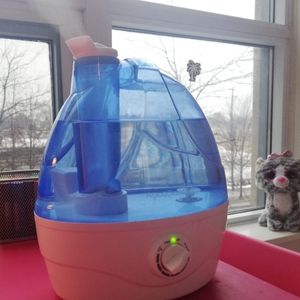Your toddler won’t nap on weekends? Learn why and try these brilliant tactics.
Is it just me, or does your toddler transform into a tiny Energizer bunny come the weekend?
You know, that tiny human who suddenly refuses to nap, leaving you in a state of bewildered exhaustion?
Understanding why this happens is the key to restoring some much-needed peace and quiet to your weekends.
In this article, we’ll delve into the intriguing reasons why your little one resists those precious midday naps on Saturdays and Sundays.
We’ll also explore effective strategies that can help you navigate this challenge, ensuring your toddler gets the rest they need for optimal growth and development.
So, grab a cup of coffee (you’re going to need it) and let’s dive into the intriguing world of weekend nap strikes.
4 Reasons Why Your Toddler Won’t Nap on Weekends
1. Disruption of Rountine on the Weekend
One of the key factors contributing to your toddler’s refusal to nap on weekends is the disruption of their routine.
During the week, your little one is accustomed to a structured day that includes regular nap times.
Whether they attend daycare or have a stay-at-home caregiver, their weekdays are typically filled with activities and a consistent schedule.
This predictability gives them a sense of security and helps regulate their sleep patterns.
However, when the weekend rolls around, that familiar routine is thrown out the window. You might be tempted to think that a break from the daily grind would be a perfect opportunity for your toddler to catch up on some much-needed rest.
But in reality, the sudden shift in their schedule can actually be quite overwhelming for them.
Imagine if your boss suddenly decided to change your work hours every weekend without warning.
You’d likely feel disoriented and struggle to adjust to the new routine.
Well, the same principle applies to your toddler. Their internal body clock is disrupted by the lack of consistent structure on weekends, making it difficult for them to settle down and take a nap.
2. Change of Environment on the Weekend
Another possible reason for the nap strikes is the change in environment.
On weekdays, your toddler is likely in a familiar setting, whether it’s their daycare or their home.
They have their own space, their own bed, and everything is just the way they like it.
But on weekends, you might be traveling or visiting friends and family, which means your toddler is exposed to new surroundings. This unfamiliarity can make it challenging for them to feel comfortable enough to nap.
So, as frustrating as the weekend nap strikes may be, it’s important to remember that your toddler is simply navigating the disruptions to their routine, the excitement of the weekend, and the unfamiliar environments they encounter.
By understanding these factors, you can approach the situation with empathy and develop strategies that will help your little one find the rest they need, even on weekends.
3. The Influence of Overstimulation
Weekends often bring a surge of activities, outings, and social interactions that can leave your little one feeling overwhelmed and overstimulated.
While it may seem counterintuitive, the very things that make weekends enjoyable for adults, such as parties, playdates, and family gatherings, can be overwhelming for young children.
During the week, your toddler likely follows a predictable routine that offers structure and stability.
They are accustomed to the familiar sights, sounds, and activities of their daily schedule. However, on weekends, this routine is often disrupted, exposing them to new and exciting experiences that can flood their senses.
From crowded places to noisy environments, your toddler may find it challenging to process all the stimuli surrounding them.
The transition from a quiet, calm environment during naptime to a bustling, stimulating weekend setting can be jarring for a toddler.
It can be difficult for them to unwind and relax amidst the chaos and excitement. Overstimulation can lead to heightened emotions, difficulty focusing, and increased restlessness, all of which can make it challenging for your little one to settle down for a nap.
4. The Power of Peer Pressure
As your toddler grows and interacts more with other children, they become increasingly aware of their actions and behaviors. They observe how their friends act and mimic their actions, even when it comes to nap time. If their little playmates refuse to nap on weekends, your toddler may feel compelled to do the same, thinking that missing out on nap time is the popular choice.
Additionally, the social dynamic of group play can create a lively and exciting environment that is not conducive to sleep. When your toddler is surrounded by friends, their energy levels spike, making it difficult for them to wind down and relax. They may be more interested in joining in the fun and games rather than settling down for a nap.
Peer pressure at this age can be quite powerful, as toddlers seek acceptance and validation from their friends. They may fear being left out or labeled as “different” if they choose to nap while their peers are engaged in play. The desire to fit in and be part of the group can override any natural inclination to rest.
This post is about what to do if yout toddler won’t nap on weekends
Toddler Won’t Nap on Weekends and What To Do About It

1. Create a Relaxing Nap Environment
In the pursuit of ensuring your toddler gets the rest they need, creating a relaxing and conducive nap environment is key.
By setting the stage for a calm and peaceful nap, you can help your little one drift off into a restful slumber more easily.
One important aspect to consider is the lighting in the room.
Natural light is ideal during the day, as it helps regulate your toddler’s internal sleep-wake cycle.
If possible, choose a room with windows that allow plenty of sunlight to filter in. However, when it comes to naptime, you may want to use blackout curtains or blinds to create a darker environment, promoting a deeper sleep.
These portable bestselling blinds are a real hit on Amazon! Blackout blinds will help signal to the brain that its night time and its time to sleep
Temperature is another crucial factor in creating a peaceful nap environment.
The ideal temperature for sleep is between 68-72 degrees Fahrenheit (20-22 degrees Celsius). Ensure the room is well-ventilated and consider using a fan or opening a window to keep the air circulating.
RELATED POST:
9 Incredible Products That Actually Help Promote Toddler and Baby Sleep
Additionally, dressing your toddler in comfortable, breathable sleepwear can contribute to a more restful nap.
Creating a cozy sleep space can greatly enhance your toddler’s nap experience.
Choose a crib or bed that is comfortable and safe, with a non toxic mattress that provides adequate support.
This Organic 2 in 1 Kids Mattress by Naturepedic has raving reviews from parents and has won the Good Housekeeping 2021 Parenting Award. That’s because it’s one of the only mattresses out there that’s breathable, organic PLUS WATERPROOF (this will make your life so much easier once you start potty training!)
You can check out more Naturepedic products here and see for yourself why it’s a go to brand for every parent looking for safe, non-toxic sleep solutions.
Keeping a humidifier in the kid’s room is another hack that has been crazy helpful for us; it helps my kid’s nasal passageway stay clear and sleep better through the day and night (this is the cool mist humidifier we use and absolutely love!).

Consider the overall ambiance of the room as well.
Soft background noise, such as a white noise machine or a calming lullaby, can help drown out any outside distractions and create a soothing atmosphere.
Keep the room clutter-free and minimize any stimulating toys or decorations that may distract your toddler from settling down for their nap.
When it’s time to rest, darken your toddler’s room as well as you can. Blackout curtains are great because they block the light and help to muffle outside sounds.
happiestbaby
2. Tire Out Your Kid
If your toddler won’t nap on weekends, it might be that they aren’t getting enough physical activity on weekends. Kids usually get a lot more movement in their day when they are at daycare or school as opposed to when they are home.
Try to incorporate movement in their day so that they are physically tired by mid day and ready to hit the sack.
This can include simple things like walking to a nearby park, playing in the backyard or engaging in activities at home that involve movement.
3. Establish a Consistent Nap Schedule
One key aspect of creating an optimal naptime experience for your toddler is establishing a consistent nap schedule.
While it can be tempting to allow flexibility in your child’s nap routine, sticking to a regular schedule can actually benefit their overall sleep routine in the long run.
Consistency is important for young children as it helps regulate their internal body clock, or circadian rhythm.
When your toddler knows what to expect in terms of naptime, their body will become naturally attuned to those specific sleep cues, making it easier for them to wind down and fall asleep.
To establish a consistent nap schedule, start by choosing a set time for both the morning and afternoon nap.
Ideally, this schedule should align with your child’s natural sleep patterns and their overall daily routine.
Pay attention to the times when your toddler seems naturally tired and prone to dozing off, and use those cues to determine the most appropriate nap schedule for them.
Once you’ve determined the ideal nap times, it’s important to stick to them as closely as possible.
Consistency is key here. Try to create a routine around naptime, including activities that prepare your toddler for sleep.
This could include reading a story, singing a lullaby, or simply dimming the lights in the room. By following the same routine each day, your child will start associating these activities with naptime and become more receptive to the idea of settling down for a nap.
Establishing a consistent nap schedule not only benefits your toddler’s sleep routine, but it can also create a sense of predictability and security for them.
Knowing what to expect and having a structured routine can help reduce any resistance or power struggles during naptime.
4. Fix Your Child’s Night Time Sleep
If your child is sleeping poorly at night time, it’s very likely that it is going to impact the quality of their sleep during naps.
Remember, if your child is not sleeping well at night, this will lead to them being over- tired during the day and not being able to nap.
So if your toddler won’t nap on weekends, your first priority is to fix their night time sleep. You can do this by establishing a good bedtime routine, using an adorable bedtime chart like this one to create predictability and engaging your child in calming bedtime activities before bed.
Good nighttime sleep habits are essential to improving your child’s naps. If your child struggles to fall asleep in the evening or wakes up multiple times during the night, your first priority should be teaching them to fall asleep at bedtime
nytimes.com
5. Don’t Panic During Nap Strikes
Nap time resistance is perfectly normal. So don’t panic if your toddler won’t nap on weekends.
Continue following your nap routine and attempting to get your child to take a nap. If you’re still facing resistance, try getting your child busy in physically engaging activities and trying again once they are tired out.
6. Transition to Quiet Time
There comes a time when your child is resisting nap time every single day. You’ve tried every trick in the book but nothing is working. It may be time to give up on naps.
Children drop their nap time for good at different ages. My older one was napping until the age of 5 but my younger one dropped her nap by the age of 2 and a half.
A dropped nap doesn’t equate complete disaster.
For starters, kids who drop their day time naps end up sleeping earlier at night and for longer. It takes a while for things to start settling in and getting better but with time, kids get used to the dropped nap and adapt to the new schedule.
Now that your kid has totally stopped napping, what should you do?
The best thing to do is to transition your toddler from nap time to quiet time. I’ve written a whole post on this topic which you can check out over here.
When toddlers do drop a nap, it is important to replace it with quiet time. Not only does it give your toddler important downtime but it also gives you a chance to recharge as well.
verywellfamily
Use Bedtime Routine Charts to Create Predictability
Are you struggling with bedtime stalling? Is your little one taking FOREVER to finish dinner, take a bath, brush teeth, wear pjs and hop into bed?
If you’re exhausted with all the night time drama and tantrums associated with getting your toddler ready for bed then please listen up. I had the exact same issue with my little one and it was driving me insane EVERY SINGLE NIGHT. And do you know what worked to cut out the night time tantrums by 90%?
Bedtime Routine Charts.

These have been absolutely life saving and sanity saving in our home. My toddler knows what she has to do and in what order. But more than that, she’s actually EXCITED to do all her night time tasks.

You can check out the Sweetnsour Bedtime Routine Charts here. Super adorable and featuring two cute designs, your child is gonna absolutely love these!
Dealing with Naptime Resistance and Power Struggles
It’s not at all uncommon for toddlers to resist naptime, especially when they’re feeling energetic or engaged in an activity. Dealing with this naptime resistance and power struggles can be challenging, but with the right strategies, you can navigate through these moments effectively.
1. One effective strategy is to establish a calming pre-nap routine. This can include activities such as reading a book, singing a lullaby, or having a quiet conversation.
By creating a soothing atmosphere before naptime, you can help your toddler transition from their active state to a more relaxed one, making it easier for them to settle down and fall asleep.
2. Another helpful approach is to set clear boundaries and expectations.
Toddlers thrive on consistency and knowing what is expected of them. Clearly communicate that naptime is non-negotiable and stick to the routine you’ve established. By being firm and consistent, you can reduce the likelihood of power struggles and make the transition to naptime smoother.
This post is about what to do if yout toddler won’t nap on weekends
3. If your toddler still resists naptime, try offering choices within the established routine.
For example, you can let them choose which book to read or which stuffed animal to cuddle with. By providing a sense of autonomy and control, you may find that your toddler is more willing to cooperate and settle down for their nap.
4. Additionally, it’s important to be empathetic and understanding.
Toddlers may resist naptime due to various reasons, such as separation anxiety, discomfort, or simply not feeling tired.
Take the time to listen to your child’s concerns and validate their feelings. By acknowledging their emotions, you can help them feel heard and address any underlying issues that may be contributing to the resistance.
5. Another challenge you might encounter is short naps.
If your toddler consistently wakes up after only a short amount of time, it could be due to an overtired or overstimulated state.
Make sure that your toddler is well-rested before naptime by following a regular sleep schedule and providing them with plenty of physical activity during the day.
6. Naptime disruptions can also occur if your toddler wakes up too early in the morning.
To address this challenge, ensure that your toddler is getting enough sleep during the night. Establish a consistent bedtime routine, create a dark and quiet sleep environment, and avoid any stimulating activities or screens before bed. If your toddler still wakes up too early, try adjusting their bedtime slightly later to see if it helps regulate their wake-up time.
7. Occasionally, your toddler may resist returning to their usual nap schedule after a disruption, such as traveling or illness.
In these situations, be patient and give them time to readjust. Gradually reintroduce their normal naptime routine, and provide extra comfort and reassurance during this transition period.
Consistency and a gentle approach will help your toddler regain their sleep routine and ensure they get the rest they need.
Incorporating these strategies into your weekend routine can greatly improve your toddler’s sleep and overall well-being.
Read these posts next:
6 Brilliant Hacks to Stop Your Toddler Kicking Off the Blanket
Toddler Unzipping the Sleep Sack? 7 Genius Tactics To Try
9 Incredible Products That Actually Help Promote Toddler and Baby Sleep
7 Super Clever Ways to Stop Your Toddler Falling Out of Bed
5 Expert Hacks on How to Transition Your Toddler to a Blanket





Leave a Reply